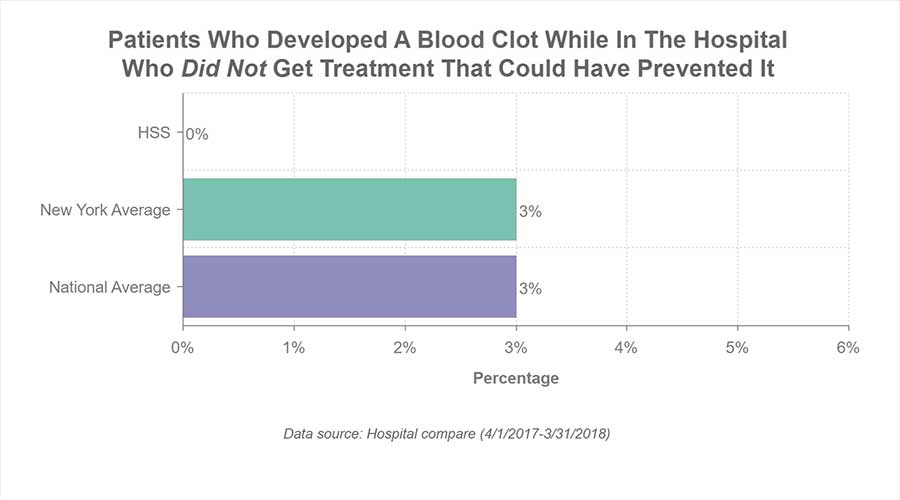Preventing Blood Clots after Surgery
Without preventive care, as many as 30 to 50 percent of patients undergoing joint replacement surgery would develop blood clots, usually in the thigh or calf. If the clot breaks free and travels through the veins, it can reach the lungs, where it becomes a pulmonary embolism.
Hospital for Special Surgery has an active surveillance program to identify at-risk patients and monitor all patients for blood clots. In addition, HSS physician-scientists are constantly trying to discover better ways to prevent post-surgical blood clots.
To prevent blood clots after surgery, doctors have the choice of using blood thinning medications or a compression device that wraps around the leg to maintain normal blood flow. While these methods prevent blood clots in most patients, a few patients will still develop this complication despite the best preventive care. Ordering and giving these preventive treatments at the right time is one indication of quality of care.
At Hospital for Special Surgery, we perform better than the national average in preventing blood clots after surgery.

Back to Quality and Safety at HSS